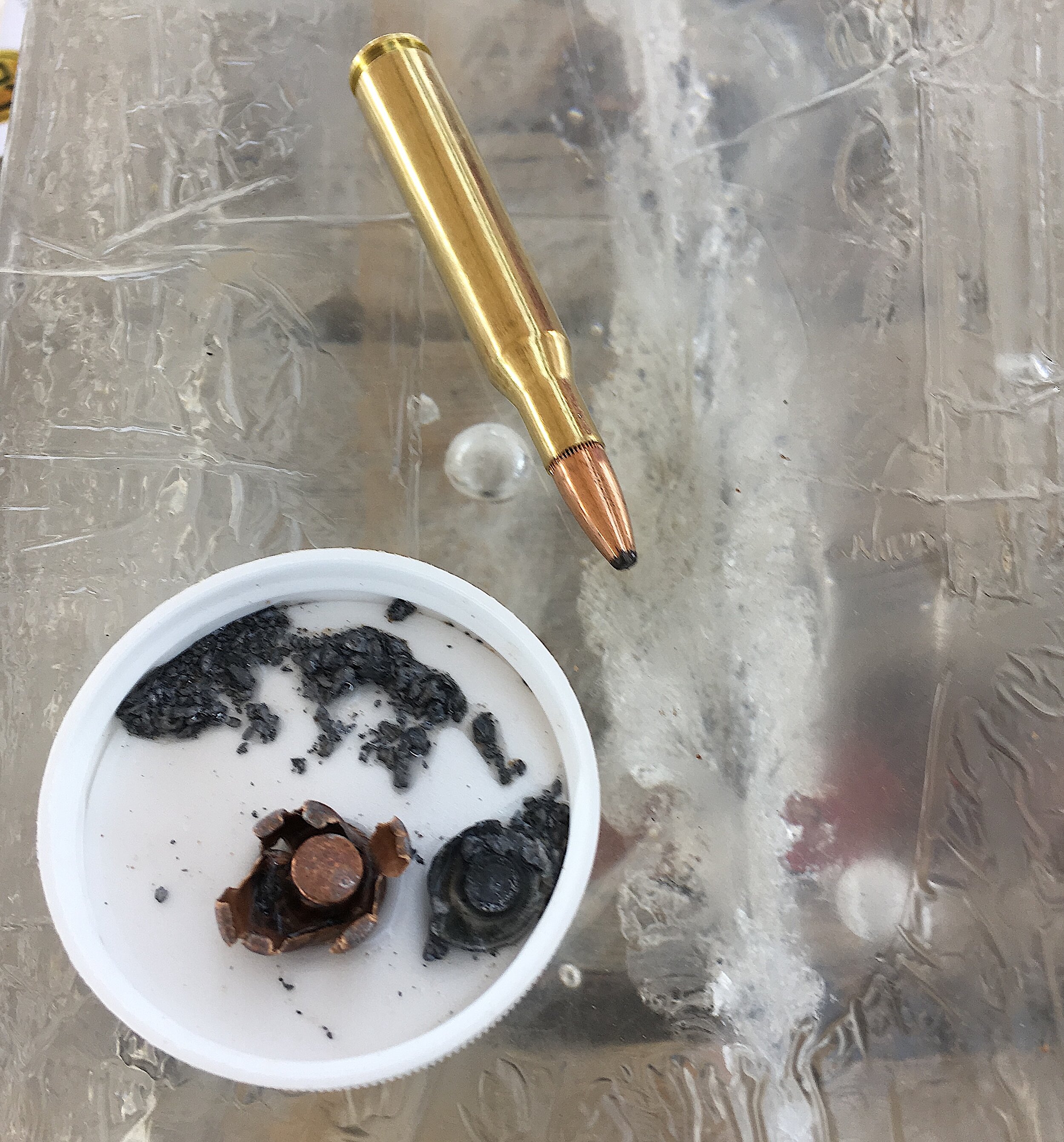Copper Versus Lead Bullets
A copper versus lead bullets video we recently released is generating the anticipated duels. Hate ‘em. Love ‘em. Useless. The best. And that’s for both sides.
But what’s the truth? Are lead core bullets better than copper or vice versa? Before you decide, you might want to watch this video to get the inside scoop, so to speak.
https://www.youtube.com/watch?v=We6OM03wSEI
In the video I not only discuss various bullet types, but show them sectioned so you can see the internal construction. Of course you can’t see the molecular structure, but I explain processes such as bonding and partitioning to put them in perspective.
Just as revealingly, I show bullets I’ve recovered from game over the years. This illustrates what happens to all varieties and types of bullets. Especially revealing is a still photo I captured of a traditional 130-grain, cup-and-core bullet fired from a 270 Winchester into three gallon jugs of water 100 yards away. The number of pieces into which that lead slug was demolished is eye opening. In fact, I think I’ll include that image here along with these observations:
Photo shows a lead core bullet fragmented after impadct with jugs of water. Dozens of tiny lead pieces. Copper versus lead debate centers on this performance.
A 130-grain cup-and-core bullet recovered after impact with three gallon-sized milk jugs filled with water. In addition to the main core separating from the jacket, much of the lead shattered into the dozens of tiny pieces.
Such soft lead bullet fragmentation can result in massive tissue destruction and quick death. The bullet essentially “explodes” upon contact with the tissues. Lead fragments cut and crush blood vessels, heart muscles, and lung tissue over a wide area. The massive and immediate blood loss leads to unconsciousness. Quickly. I’ve shot many deer with such bullets. Most collapsed instantly or within a leap or two. However…
Photo shows hunter with big buck felled by one frangible .243 bullet to the heart.
One frangible, 70-grain .243 bullet to the heart from 186 yards ended this old Del Carmen mountains whitetail after two jumps downhill.
I can think of at least two concerns with this kind of bullet performance. The first is the well known “insufficient penetration” issue. The frangible bullet hits major muscles or bone and fails to reach the vital organs. Flesh wound. Like John Nosler, I’ve been there, done that. The second is the inciting issue of lead poisoning. I’m not making a judgement call on this, but I have seen several credible scientific studies showing that eagles, hawks, various Corvids and other scavenging birds have ingested these lead fragments while feeding on offal or wounded and lost game. Most died from lead poisoning.
Image shows bald eagle in flight, a bird that has been poisoned from lead bullet fragments in offal.
Inadvertent poisoning of scavengers is wasteful and a black-eye on hunters.
Whether or not ingesting these fragments leads to lead poisoning in humans, I don’t know. But do I want to feed these to my grandkids? Something to think about.
Also fascinating are the varied reactions to this video. Many viewers have commented that they’ve never found a more effective hunting bullet than the Brand Whatever all-copper bullet. Other’s are adamant that coppers never work and lead core is the only way to go. No big surprise. After 95 years we’re still arguing over which is better, the 270 Winchester or 30-06 Springfield.
The author tries to experiment with most bullets and judge them on their performance. He cannot say that any one is superior to all others for all uses.















